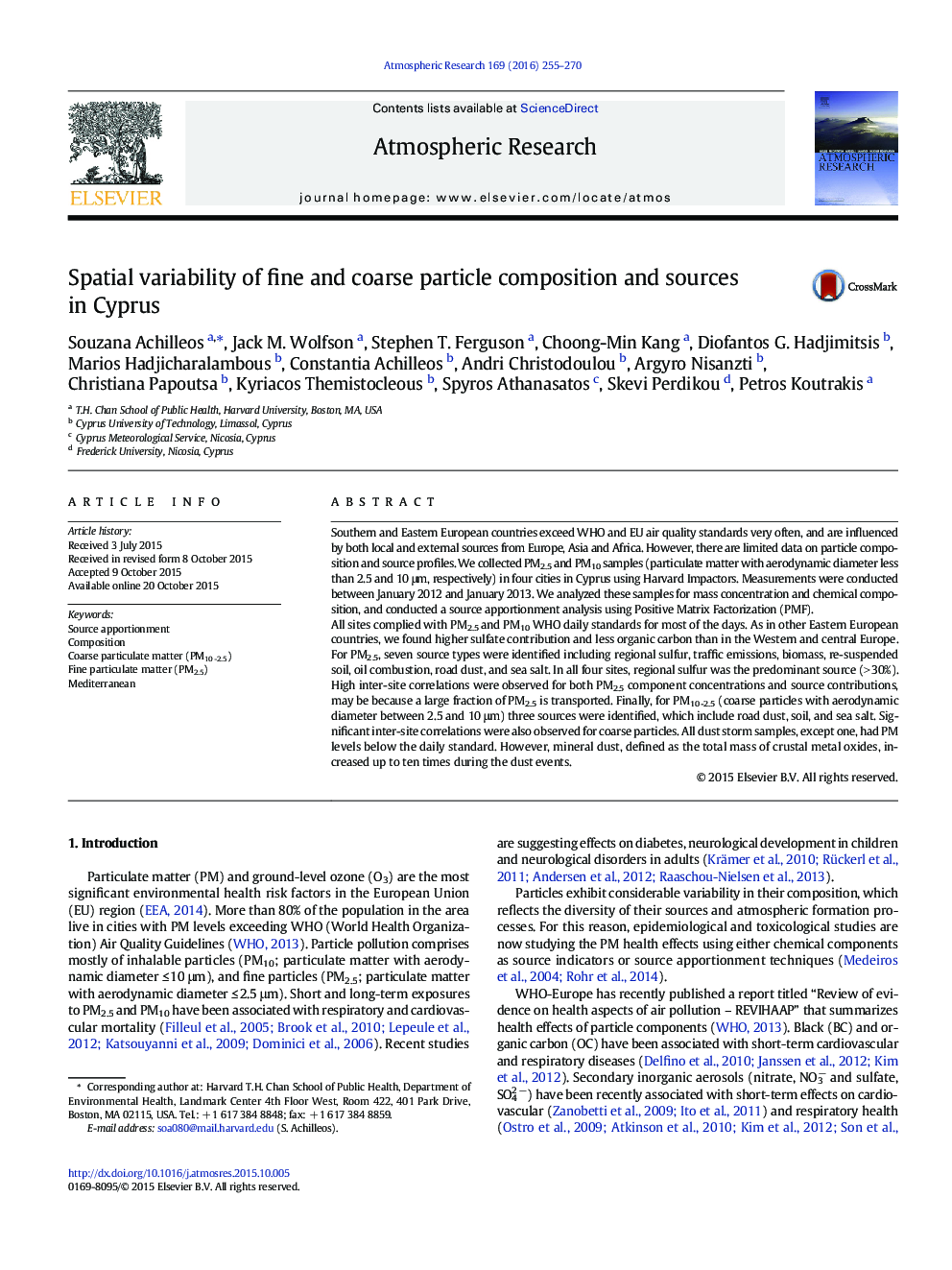| کد مقاله | کد نشریه | سال انتشار | مقاله انگلیسی | نسخه تمام متن |
|---|---|---|---|---|
| 4449705 | 1311647 | 2016 | 16 صفحه PDF | دانلود رایگان |
• We present the composition and sources of PM2.5 and PM10 -2.5 for a Mediterranean island.
• PM2.5 consisted mainly of sulfate, nitrate, elemental and organic carbon.
• PM2.5 main sources were regional sulfur (> 30%), traffic, and biomass.
• PM10 -2.5 sources included road dust, soil and sea salt.
• Mineral dust increased up to ten times during dust storms.
Southern and Eastern European countries exceed WHO and EU air quality standards very often, and are influenced by both local and external sources from Europe, Asia and Africa. However, there are limited data on particle composition and source profiles. We collected PM2.5 and PM10 samples (particulate matter with aerodynamic diameter less than 2.5 and 10 μm, respectively) in four cities in Cyprus using Harvard Impactors. Measurements were conducted between January 2012 and January 2013. We analyzed these samples for mass concentration and chemical composition, and conducted a source apportionment analysis using Positive Matrix Factorization (PMF).All sites complied with PM2.5 and PM10 WHO daily standards for most of the days. As in other Eastern European countries, we found higher sulfate contribution and less organic carbon than in the Western and central Europe. For PM2.5, seven source types were identified including regional sulfur, traffic emissions, biomass, re-suspended soil, oil combustion, road dust, and sea salt. In all four sites, regional sulfur was the predominant source (> 30%). High inter-site correlations were observed for both PM2.5 component concentrations and source contributions, may be because a large fraction of PM2.5 is transported. Finally, for PM10 -2.5 (coarse particles with aerodynamic diameter between 2.5 and 10 μm) three sources were identified, which include road dust, soil, and sea salt. Significant inter-site correlations were also observed for coarse particles. All dust storm samples, except one, had PM levels below the daily standard. However, mineral dust, defined as the total mass of crustal metal oxides, increased up to ten times during the dust events.
Journal: Atmospheric Research - Volume 169, Part A, 1 March 2016, Pages 255–270
